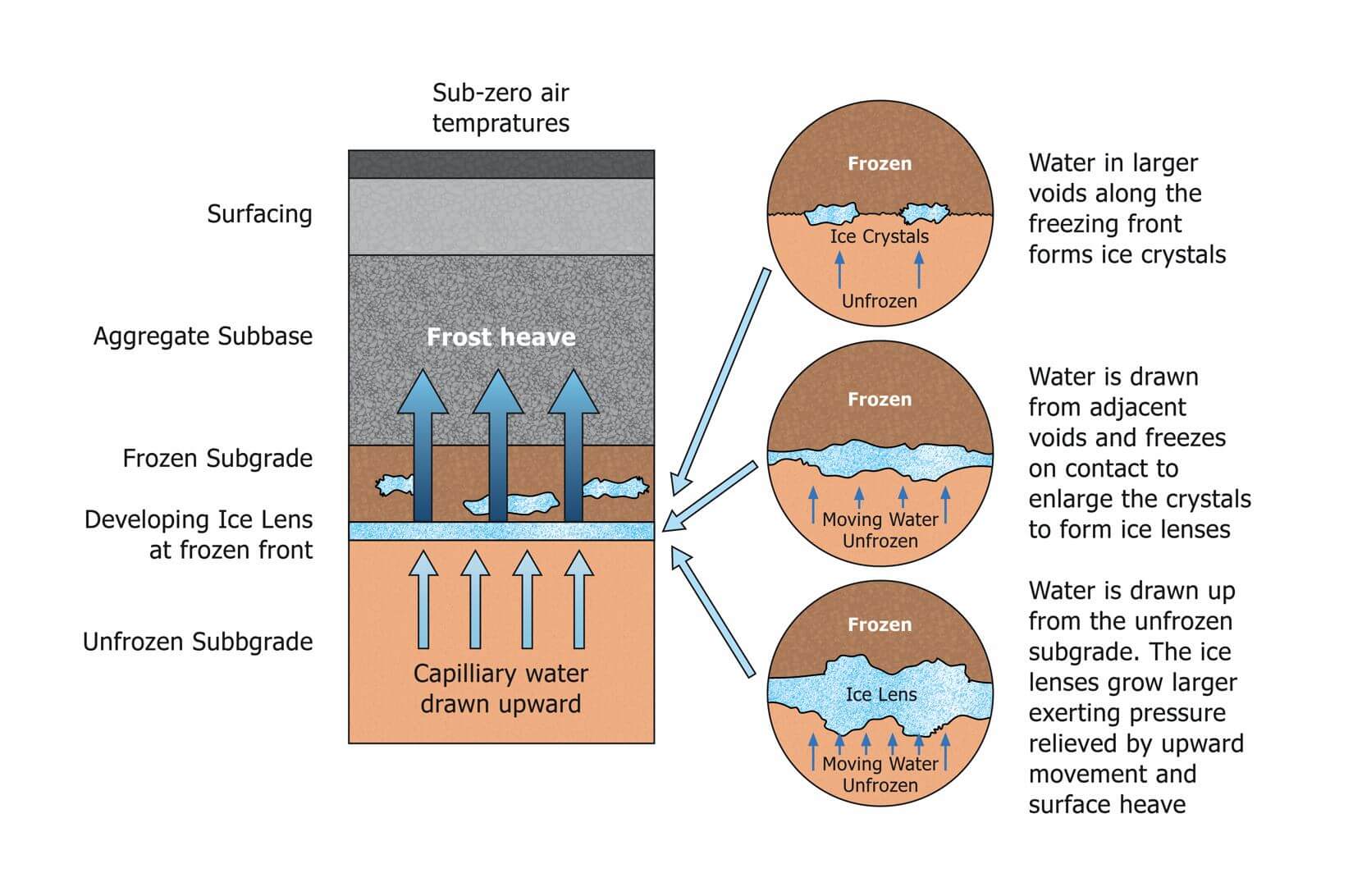When considering whether to dig a concrete porch under the frost line, many homeowners and builders must look at several factors, such as the climate and location of the home. While it is true that a concrete porch must be dug below the frost line to prevent damage from freezing temperatures, some other considerations related to this practice should be considered before beginning any project. This article will examine why you should dig a concrete porch beneath the frost line and how to do it safely and efficiently.
Please read our article about frost line depth by zip code, which shows different values for different States.

Do You Dig a Concrete Porch Under The Frost Line?
Yes, you need to dig a concrete porch under the frost line because it needs to be in winter when the ground freezes, preventing shifting during freeze-thaw cycles. In the worst case, a concrete porch above the frost line can start the process where water in the concrete freezes, expands, and thaws as temperatures fluctuate, stressing the concrete and causing cracking.

To begin with, one of the main reasons you should dig a concrete porch beneath the frost line is that doing so helps protect your structure from damage caused by freezing temperatures. When the water in the soil below ground freezes, it expands, causing heaving or shifting, which can pressure your foundation and cause cracking or other structural damage.
If not prevented early in construction, this damage can become quite severe in areas with particularly cold or snowy winters. Placing your concrete porch just below the frost line precludes this kind of disaster by reducing pressure on your foundation while allowing natural drainage away from your structure during wetter months.
Placing your concrete porch beneath the frost line protects against heaving and shifting during freeze-thaw cycles. There are several other benefits to this, too.

Shifts during freeze-thaw cycles above the frost line refer to movements or changes in the soil and objects on or above the ground surface due to the repeated freezing and thawing of soil moisture. This phenomenon is known as “frost” jacking” or “rost” heaving.”
When “the water in the soil freezes, it expands, exerting a force on the surrounding soil and any objects, such as plants, fences, or even buildings (see the above image). As the soil thaws, it can contract and settle back down, leading to movements in these objects. These shifts can damage structures and disrupt infrastructure such as roads and pipelines.
The depth of soil freezing above the frost line is not as deep as below, but it can still cause significant damage. For example, frost heaving of sidewalks, driveways, and other flat surfaces can cause tripping hazards and uneven surfaces. In contrast, frost-jacking fence posts or other objects can cause them to become unstable or even break.
Let us analyze concrete porch more:
We must include improved drainage due to better-soaking water away from your structure and preventing thermal shock due to more consistent temperatures throughout winter. Both factors can prolong the life expectancy of your operations and reduce energy bills by keeping more heat within walls rather than escaping through floors.
When it comes to actually digging out around each post to a proper depth beneath the frost line, valuable tools and techniques must be used to avoid potential risks or damages during construction.
For example, shovels or even larger machines such as backhoes can cause undue stress on surrounding soil, leading to later problems with settling or sinking over time due to soil compaction beneath each post-hole area. Instead, manual digging with small spades or even power augers is preferable for avoiding these issues and ensuring longevity for future generations regarding your operations.
All in all, when it comes time to build a new concrete porch near your home or business property, taking an extra few steps beforehand, such as digging below the frost line, can make all the difference between minor repairs down the road and major fixes needed after winter hits—both financially and structurally speaking!
With proper preparation beforehand using correct methods and materials such as gravel boards beneath each post hole before any pouring begins, along with other necessary excavation work being done right off-the-bat – you’ll have confidence knowing that your beautiful new outdoor space is built correctly now and will last far into future years without any worries about unexpected shifting or cracking down the road caused by extreme weather conditions associated with wintertime temperatures dropping too low where you live!
- Facebook Ads to Get Followers! - December 27, 2024
- ClickUp vs. Slack - December 20, 2024
- Mastering E-Commerce Analytics: A Blueprint for Success






